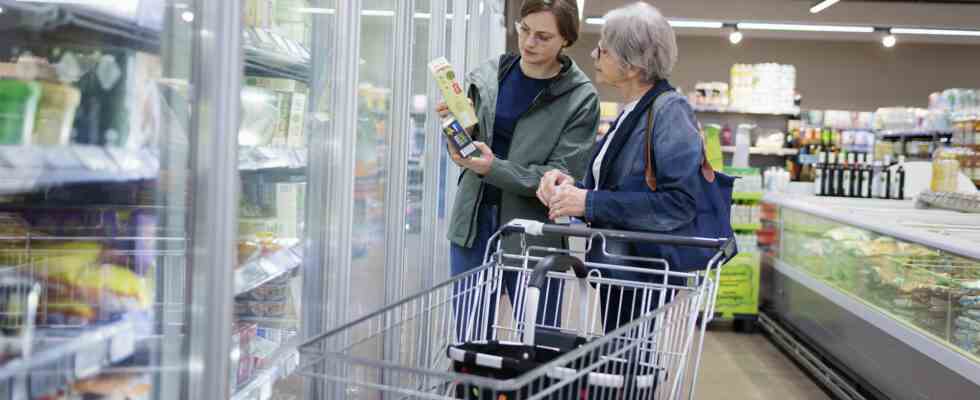Status: 08/19/2022 09:53 a.m
Food prices are currently rising sharply. There is increasing criticism of retailers and manufacturers who try to hide price increases with smaller packaging with less content.
Consumer advocates advise taking a closer look at the prices of familiar products when shopping in the supermarket. Increasingly, manufacturers have reduced the package contents instead of directly increasing the price. “We are currently experiencing the first wave of such hidden price increases,” said Armin Valet, food expert at the Hamburg Consumer Center, the German Press Agency. “But I think the high point is yet to come.”
Valet has been observing for years how manufacturers and retailers use pack sizes to disguise price increases and chooses a deceptive pack of the year every twelve months. At the moment there are a lot of complaints about such tricks at the Hamburg consumer center, said Valet.
temptation for manufacturers and retailers
The background to this is the currently drastically rising food prices: according to the Federal Statistical Office, food and non-alcoholic beverages were 14 percent more expensive in July than a year earlier. Increased raw material prices are just as noticeable here as higher energy costs or additional expenses for logistics as a result of the corona pandemic and the Ukraine war.
Experts see a great temptation for manufacturers and retailers to conceal price increases. The calculation: If the pack shrinks a bit, it is less noticeable when shopping than if the price goes up. The term “shrinkflation” is already circulating for this – a combination of the English word for “shrink” and inflation.
Psychological price thresholds
“We will see this more often in the future than in the past,” says marketing expert Martin Fassnacht from the WHU business school in Düsseldorf. Trade and manufacturers were reluctant to exceed the usual price thresholds such as 1.99 euros. “If such a threshold is exceeded, a product suddenly appears significantly more expensive and there is a risk that the sales volume will collapse drastically.”
The expert understands this practice. However, he believes that manufacturers should play their cards openly towards consumers. “For reasons of fairness, it is important that the manufacturers also reduce the packaging when they reduce quantities.” Then they could also hope for understanding from consumers. “Some people may also be happy not to have to pay more because of the reduction in volume.”
“Price Adjustments to Stay Affordable”
There are already examples of such “shrinkage cures”. The manufacturer Haribo, for example, recently reduced its “Golden Bear” bag from 200 to 175 grams. The recommended price of 0.99 cents remained the same, despite 12.5 percent less content. “As a company, since the beginning of the year we have been confronted with extraordinarily rising costs for high-quality ingredients, but also for foils, packaging materials, cardboard boxes as well as energy and logistics in the high double-digit range,” said Haribo, explaining the step. The company is adjusting packaging sizes and price to remain affordable.
“It was important to us that we no longer have ‘air’ in the bag, i.e. keeping the size of the bag, but also making the bag visibly smaller,” says a company spokesman. As a result, the reduction in the filling quantity is clearly recognizable to customers.
Smaller pizza, fewer peanuts
The branded goods company Henkel also took a similar approach with its “Vernel” brand fabric softener. “Since we were not able to fully absorb the cost increases in some cases, we decided to partially adjust the filling quantities of our products,” says the company.
According to its own statements, the snacks manufacturer Intersnack was also forced to “adjust the filling quantity of the ültje peanuts” due to the increase in costs. But consumer advocates have also encountered shrinking package contents for jam, margarine, crisps and even frozen pizza in recent weeks.
More double price increases
That’s not forbidden, admits the consumer advocate Valet. But it is a trickery at the expense of the customers. It is striking that supermarkets and discounters are increasingly resorting to such hidden price increases for their own brands.
According to the Hamburg consumer advice center, the frequency of so-called double price increases has also increased. This means products in which not only the filling quantity has been reduced, but the price has also been increased by retailers. While this affected an average of 18 percent of the articles observed in the past two years, it was already around 35 percent in the first half of 2022.

